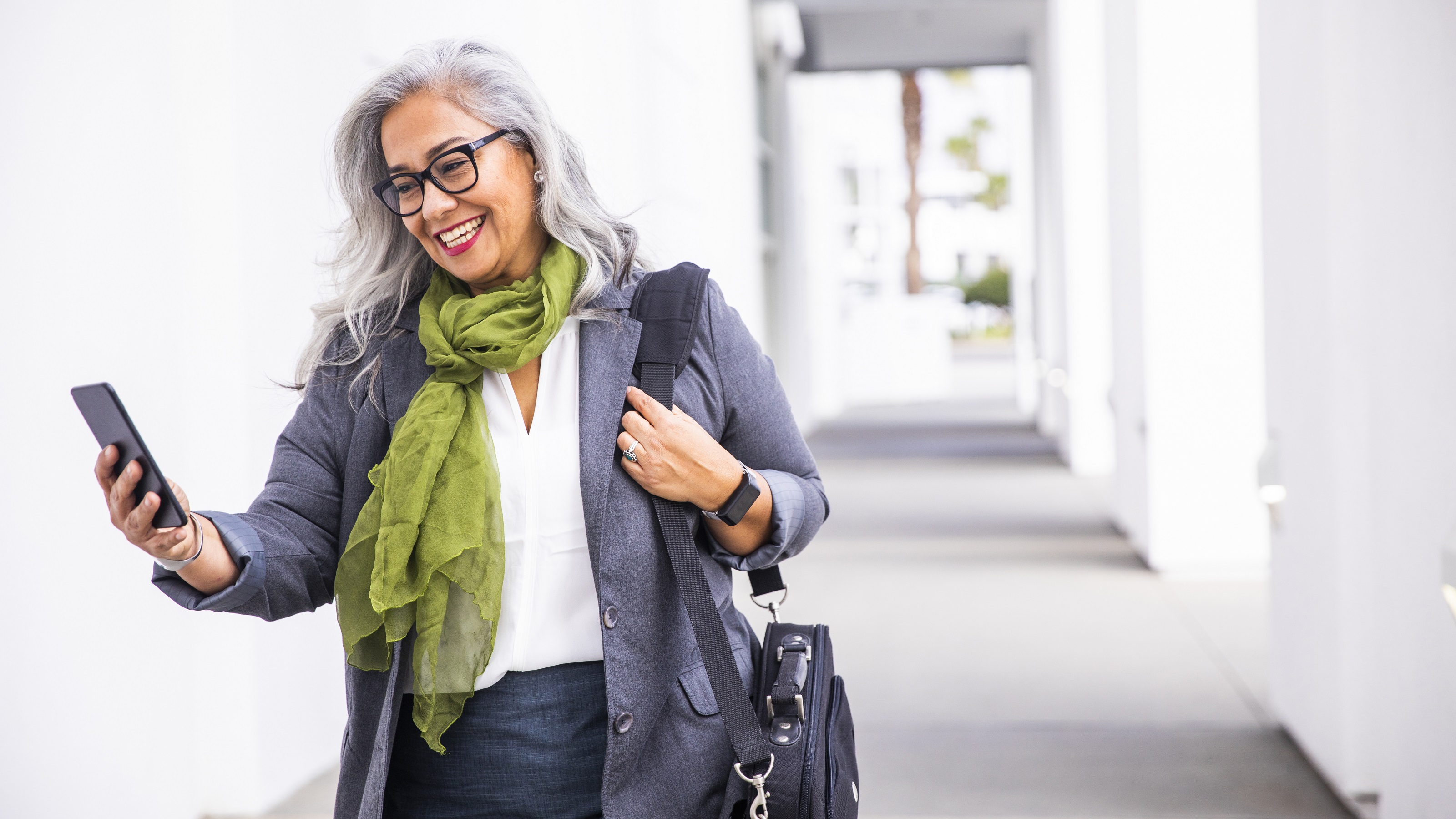Don’t Let Volatility Rear-End Your Retirement Plans
You never put market risk behind you entirely. To protect yourself, you need to keep an eye out and be proactive. One step you might not have considered: Try using both an active and a passive investing strategy.


Imagine you’re on a busy road, behind someone who’s driving erratically. He might be drunk or on the phone, eating a burrito or physically ill. You have no idea. All you know is you want to get around and pass his car as quickly as possible.
But every time you think you’ve managed to pull far away, you spot him in your rearview mirror. His unpredictable maneuvers don’t seem quite so menacing anymore, because he’s behind you now — but it’s still a concern, and something you need to keep an eye on.
That’s how investors, especially those in or near retirement, should be looking at volatility in the markets. You might think you’re safe — after all, 2008’s drastic market drop is long behind us. But the risk never really goes away. As we’ve seen recently, the market is unpredictable; you can’t know if or when volatility will pull up alongside you again and push you off the road. So, you have to keep an eye out and protect yourself by being proactive.

Sign up for Kiplinger’s Free E-Newsletters
Profit and prosper with the best of expert advice on investing, taxes, retirement, personal finance and more - straight to your e-mail.
Profit and prosper with the best of expert advice - straight to your e-mail.
Here are some steps to take now:
1. Make sure you understand how your portfolio is diversified.
Often, prospective clients come to our office thinking they have a moderate or even conservative portfolio, but when we do an analysis, we find that isn’t the case. Sometimes, the risk is extremely high — perhaps because their portfolio manager has adjusted the percentage of stocks or exchange-traded funds to meet the higher expectations that come with a bull market.
We know investors get eager to rev things up when they think others are passing them by. But while those higher returns are tempting, the market can’t go up forever. Bonds are also at risk right now, in what appears to be a rising interest rate environment. And if your money is mostly in mutual funds, redundancies can add to your risk.
Your portfolio should be built around your individual situation, not a standard mix that’s based only on your current age or a target “number” you think you need to have to retire. Considerations also should include your budget, your Social Security benefits and pension, and your short- and long-range goals.
2. Look at alternative investment strategies and vehicles.
Because we’re in this historically high-equity economy and historically low interest rate environment, it’s like the perfect storm. Consider changing things up a bit, perhaps by using a long/short strategy to minimize your exposure — taking long positions in stocks that are expected to appreciate and short positions in stocks that are expected to decline. And talk to your adviser about alternative products, like annuities, that aren’t directly tied to the market to further diversify your portfolio.
3. Think about using an active and passive investment approach.
Passive management — where an investor or financial adviser makes investments for the long term and is not influenced by short-term market fluctuations — has been successful for some time now. But as volatility rolls into view again, you might benefit from using both active and passive strategies.
Active portfolio managers watch for market and industry trends, changes in the economy and political landscape, and factors that may affect specific companies. More trading can result in more fees and higher taxes, so active management should be appropriate for the assets you have. But when things get shaky, this more vigilant approach may help to protect your money.
It can be challenging to alternate your focus from the returns in front of you to the risk that’s creeping up from behind, but in retirement, it’s crucial. If a stock market downturn occurs in the years just before or after you retire, the damage to your portfolio — and your future security — could be irreparable.
Caution is key. Always keep your destination in mind as you maneuver through the market’s many twists and turns. Make sure you’re working with an adviser who uses products and strategies that can keep you safely on a course to outpace inflation, avoid high taxes and reach all your retirement goals.
Kim Franke-Folstad contributed to this article.
Advisory services offered through Lake Point Wealth Management, LLC, an SEC Registered Investment Adviser. Insurance products and services offered through Lake Point Advisory Group, LLC.
Disclaimer
The appearances in Kiplinger were obtained through a PR program. The columnist received assistance from a public relations firm in preparing this piece for submission to Kiplinger.com. Kiplinger was not compensated in any way.
Get Kiplinger Today newsletter — free
Profit and prosper with the best of Kiplinger's advice on investing, taxes, retirement, personal finance and much more. Delivered daily. Enter your email in the box and click Sign Me Up.

Reid Johnson, TX license 1068067, is president and founder of Texas-based Lake Point Advisory Group, LLC (www.lakepointadvisorygroup.com). As a financial professional and fiduciary when providing financial advice, he is dedicated to providing his clients with the individual attention necessary to help them pursue their financial goals. He has contributed to various media sites, including Wall Street Select, CNN and The Star-Telegram.
-
 Stock Market Today: Trump Retreats, Markets Rejoice
Stock Market Today: Trump Retreats, Markets RejoiceStocks rally, yields soften, the dollar rises, and even beaten-down names enjoy the wages of potential trade peace.
By David Dittman
-
 In Trump’s Economy Should 401(k) Savers 'Set It and Forget It?'
In Trump’s Economy Should 401(k) Savers 'Set It and Forget It?'It’s hard to bury your head in the sand when the markets are volatile. Here’s when it makes sense and when it doesn’t.
By Donna Fuscaldo
-
 Bouncing Back: New Tunes for Millennials Trying to Make It
Bouncing Back: New Tunes for Millennials Trying to Make ItAdele's mournful melodies kick off this generation's financial playlist, but with the right plan, Millennials can finish strong.
By Alvina Lo
-
 Early-Stage Startup Deals: How Do Convertible Notes Work?
Early-Stage Startup Deals: How Do Convertible Notes Work?Some angel investors support early startups by providing a loan in exchange for a convertible note, which includes annual interest and a maturity date.
By Murat Abdrakhmanov
-
 SRI Redefined: Going Beyond Socially Responsible Investing
SRI Redefined: Going Beyond Socially Responsible InvestingNow that climate change has progressed to a changed climate, sustainable investing needs to evolve to address new demands of resilience and innovation.
By Peter Krull, CSRIC®
-
 Here's When a Lack of Credit Card Debt Can Cause You Problems
Here's When a Lack of Credit Card Debt Can Cause You ProblemsUsually, getting a new credit card can be difficult if you have too much card debt, but this bank customer ran into an issue because he had no debt at all.
By H. Dennis Beaver, Esq.
-
 Going to College? How to Navigate the Financial Planning
Going to College? How to Navigate the Financial PlanningCollege decisions this year seem even more complex than usual, including determining whether a school is a 'financial fit.' Here's how to find your way.
By Chris Ebeling
-
 Financial Steps After a Loved One's Alzheimer's Diagnosis
Financial Steps After a Loved One's Alzheimer's DiagnosisIt's important to move fast on legal safeguards, estate planning and more while your loved one still has the capacity to make decisions.
By Thomas C. West, CLU®, ChFC®, AIF®
-
 How Soon Can You Walk Away After Selling Your Business?
How Soon Can You Walk Away After Selling Your Business?You may earn more money from the sale of your business if you stay to help with the transition to new management. The question is, do you need to?
By Evan T. Beach, CFP®, AWMA®
-
 Two Don'ts and Four Dos During Trump's Trade War
Two Don'ts and Four Dos During Trump's Trade WarThe financial rules have changed now that tariffs have disrupted the markets and created economic uncertainty. What can you do? (And what shouldn't you do?)
By Maggie Kulyk, CRPC®, CSRIC™